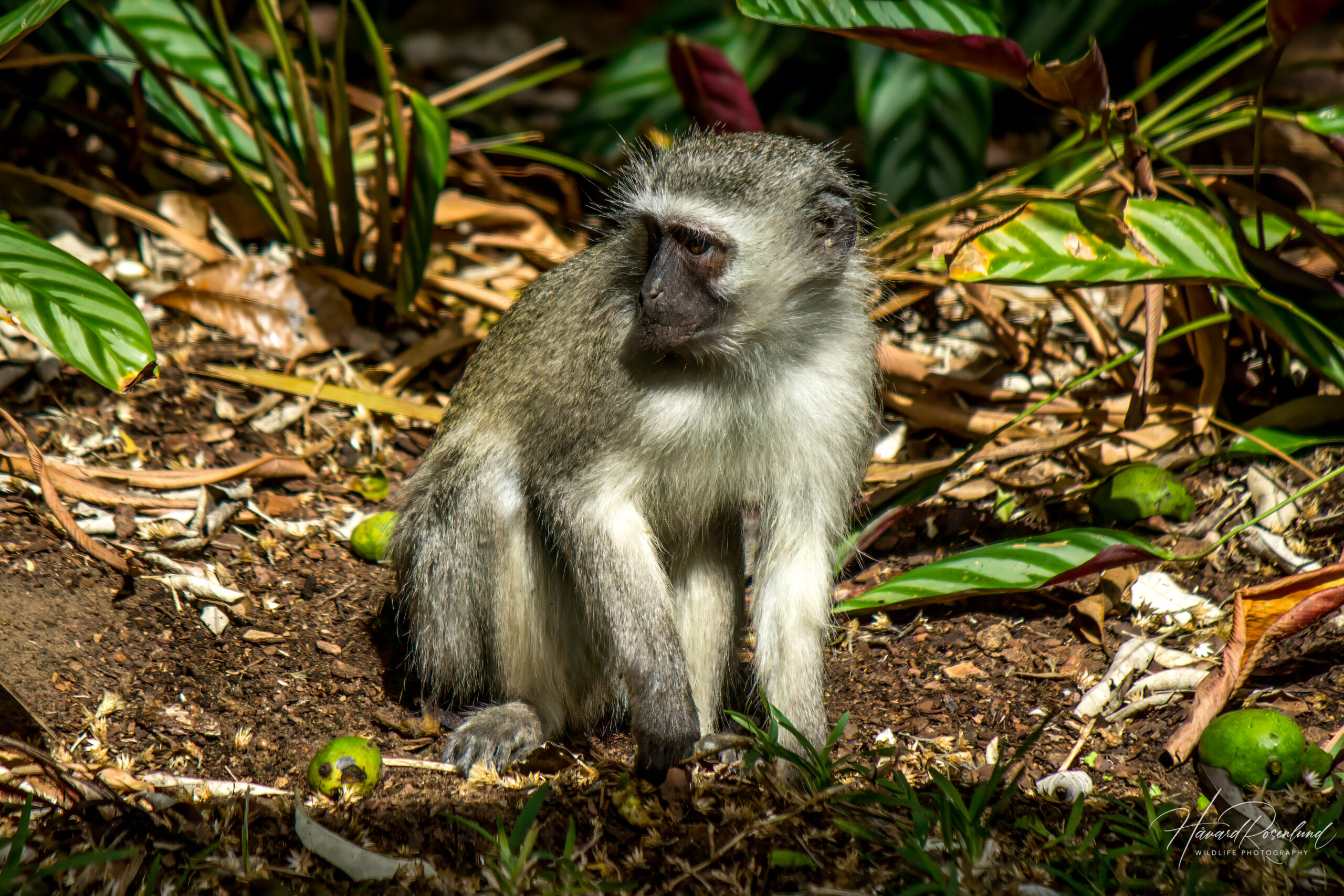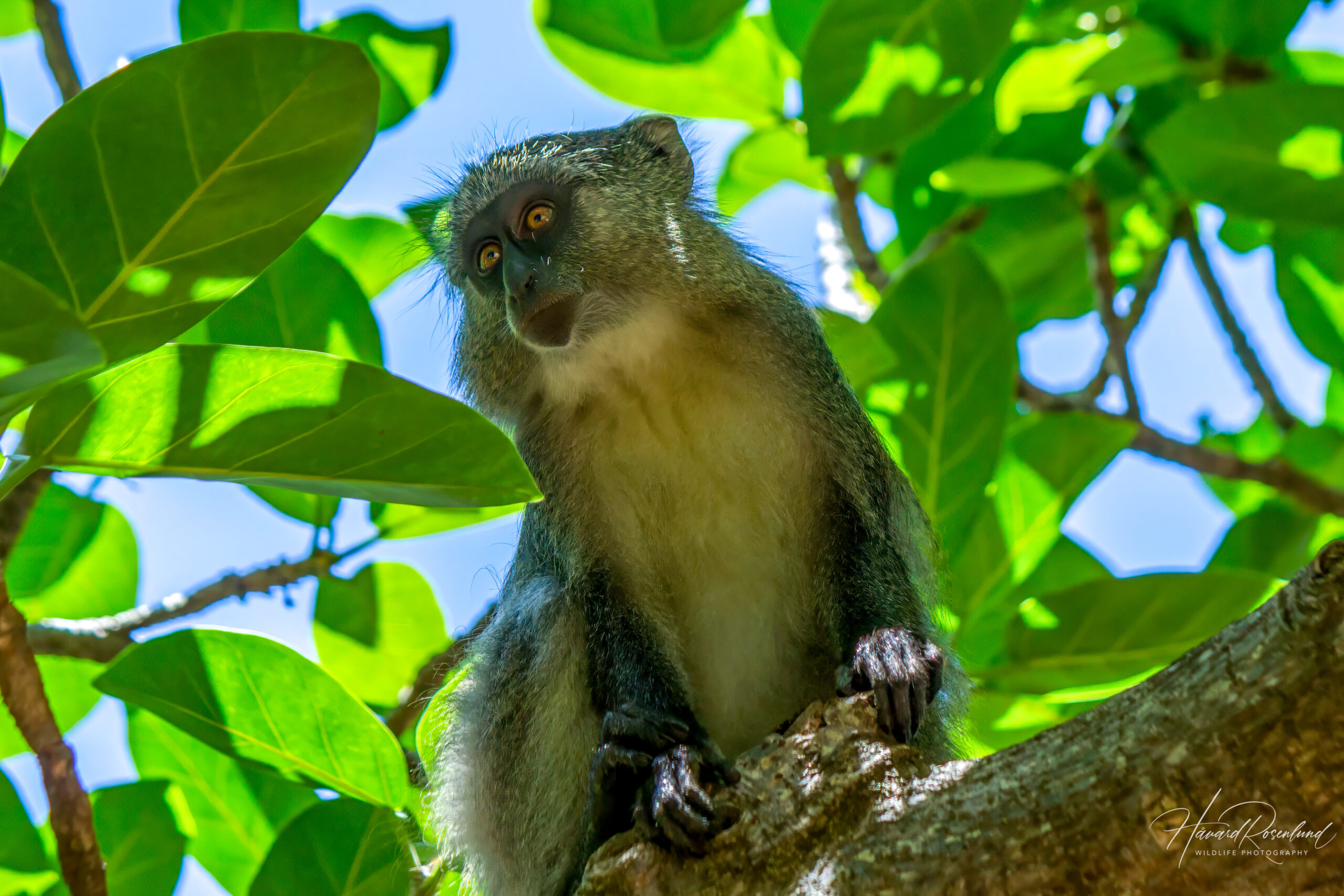Description
Vervet monkey (Chlorocebus pygerythrus) is a common and widespread species of monkey in southern and eastern Africa. It has a black face surrounded by white hair, an overall grey coat, and a whitish belly. Males are also recognized by their light blue testicles and bright red penis, which has given it the Afrikaans name “blouaap” meaning “blue monkey”. Males are larger than females and reach a length of 50 cm (19 in) from the head to the base of the tail. Females average a length of 40 cm (16 in). Weight averages 5.5 kg (12 lb.) for males and 4.1 kg (9.0 lb.) for females.
Diet & habitat
Vervet monkeys are mostly vegetarians and eat fruits, seeds, flowers, and leaves. They readily seek out gardens and farmlands to feed on crops and other commercial edible plant species, much to the dismay of farmers. Vervets also feed on insects and termites, as well as eggs and chicks in bird’s nests. It is an extremely adaptable species and inhabits many different habitats, such as savannahs, forests, and mountains up to 4,000 meters (13,100 ft) above sea level. They frequently inhabit urban environments and fragmented landscapes.
Social behavior & reproduction
Vervet monkeys live in social groups with multiple individuals of both sexes. Males leave the group upon reaching sexual maturity and will normally join adjacent groups. When leaving a group, males often leave in pairs or small groups for protection, as new groups might act aggressively towards them. If a group already have immigrated males, there is a greater chance of a peaceful welcome.
Females normally stay in their natal groups their whole life. Both sexes live in separate hierarchies, with females sharing the same ranking as their mother. Dominance in male vervet monkeys is determined by age, aggressiveness, allies and tenure. Females will often fight over high-ranking grooming partners, possibly to access more resources.
Within the social groups there are smaller family units, consisting of a mother and her offspring. Siblings will stick together in such groups, play with each other, and compete for attention from the mother. If the mother is carrying an infant, she can deliver the infant over to an allomother while she spends more time with her older offspring. Allomothers are juvenile females not yet sexually mature that help mothers in the care of babies. It might be an older daughter of the mother, but it can also be a young female from outside the family unit. These young females will then learn how it is to be a mother, and the real mother can invest more time in her older offspring or in getting another baby. Allomothers will often choose to care for high-ranking infants and discriminate against low-ranking ones.
When females reach sexual maturity, they can give birth and mate at any time of the year. After a gestation period of about 165 days, one baby is born. Twins can be born on rare occasions. Every member of the group will associate with new infants at least once, and their grandmother will associate with them more than any other female, apart from the mother.
Language
Vervet monkeys are known to have an intricate language system. They can distinguish individuals by their calls, and they will know instinctively to whom a call was made. Every offspring has its own call that the mother will pick up, and the rest of the group will also know to whom an offspring belongs when a baby screams. Though everyone in the group will react when hearing an infant scream, the mother will react first, and some members will instinctively look at the mother to whom the screaming infant belongs instead of in the direction of the sound. Vervet monkeys are additionally known to have specific alarm calls for certain predatory species such as leopard, eagle and python. Examples can be found on this link. The leopard call is also used for lions, and I’ve found and observed both leopards and lions with the help of this call.
Status
Vervet monkeys are highly adaptable and common throughout their range. They are often persecuted as pests in urban and populated areas. They also have a history of being sold in the pet trade, and their social structures are vulnerable to human influence. Although native to Africa, vervet monkeys have been introduced to several Caribbean Island-nations, where they have established populations. One population has also established itself in Broward County, Florida, in the USA. It is listed as least concern on the IUCN Red List.















